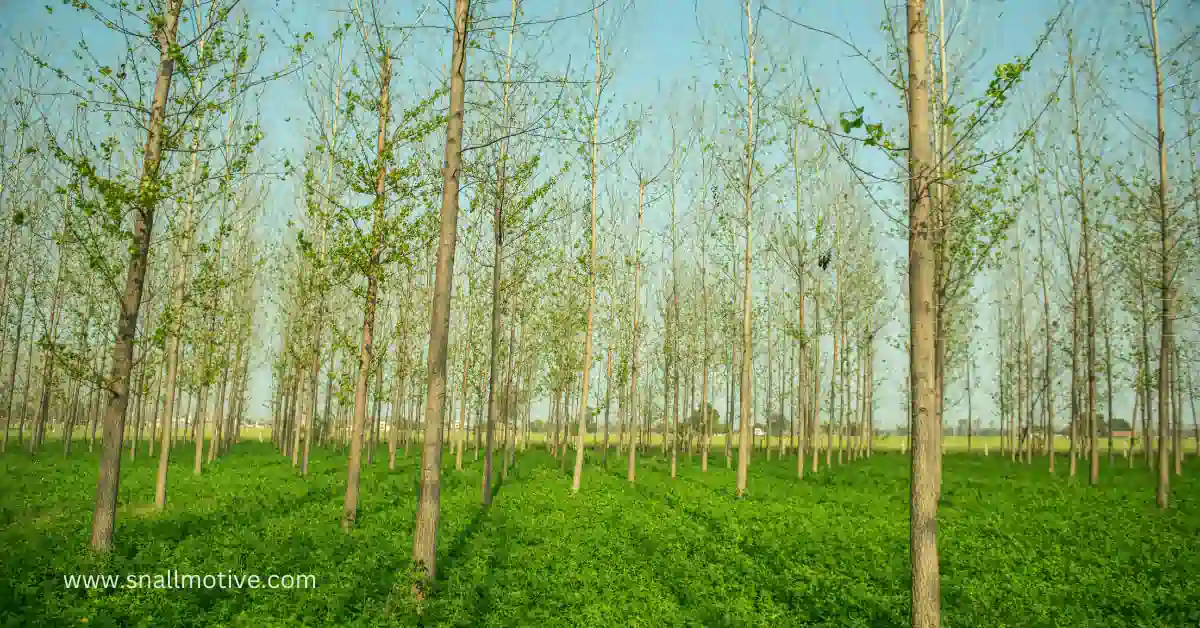Agroforestry Benefits: Enhancing Agriculture and Environment
Agroforestry is a sustainable land management practice that integrates trees and shrubs into agricultural systems, offering a multitude of benefits to both farmers and the environment. By combining crops with tree cultivation, agroforestry optimizes land use efficiency and enhances ecological resilience. Let’s explore the various advantages of adopting agroforestry practices.
Understanding Agroforestry
Agroforestry isn’t a new concept; it has been practiced for centuries across diverse cultures. At its core, agroforestry involves deliberately integrating trees and shrubs into agricultural landscapes, providing multiple outputs such as food, fodder, fuel, and timber, alongside traditional crops or livestock.
Types of Agroforestry Systems
- Alley Cropping: In this system, rows of trees are planted alongside or between rows of crops, providing shade, windbreak, and organic matter.
- Silvopasture: Integrating trees into pastureland, combining livestock grazing with tree production, which improves soil fertility and provides additional income streams.
- Windbreaks: Planting trees along field borders to mitigate wind erosion, protect crops, and create microclimates conducive to plant growth.
- Forest Farming: Simulating the structure and function of natural forests within agricultural settings, promoting biodiversity and ecosystem services.

Environmental Benefits
Agroforestry offers numerous environmental advantages:
- Soil Conservation: Tree roots stabilize soil, preventing erosion and nutrient leaching.
- Biodiversity Preservation: Diverse agroforestry systems provide habitat for various plant and animal species, enhancing overall ecosystem health.
- Carbon Sequestration: Trees sequester carbon dioxide, mitigating climate change by storing carbon in biomass and soil.
Economic Benefits
The economic benefits of agroforestry are significant:
- Diversification of Income: Farmers can generate revenue from multiple sources such as timber, fruits, nuts, and non-timber forest products.
- Increased Land Productivity: Agroforestry enhances soil fertility, leading to higher yields of crops and tree products.
- Reduced Input Costs: Natural pest control, nutrient cycling, and water retention minimize the need for external inputs, lowering production costs.
Social Benefits
Agroforestry positively impacts communities:
- Community Involvement: Agroforestry encourages farmer collaboration, fostering knowledge sharing and collective action.
- Improved Livelihoods: Diverse income streams and ecosystem services enhance household resilience and food security.
- Access to Resources: Trees provide valuable resources such as fuelwood, fodder, and medicinal plants, meeting local needs sustainably.

Case Studies
Successful agroforestry projects exist worldwide, showcasing its potential:
- Project A: Alley cropping in Sub-Saharan Africa increased crop yields by 20% while improving soil fertility.
- Project B: Silvopasture systems in South America enhanced livestock productivity and restored degraded pasturelands.
Challenges and Limitations
Despite its benefits, agroforestry faces challenges:
- Land Tenure Issues: Unclear land rights hinder long-term investments in agroforestry.
- Knowledge Gaps: Farmers require training and technical assistance to effectively adopt and manage agroforestry systems.
- Market Access: Limited market opportunities for agroforestry products restrict the scalability of these practices.
Future Prospects and Opportunities
The future of agroforestry looks promising:
- Adoption Trends: Increasing awareness of agroecological principles and climate change mitigation drives the adoption of agroforestry worldwide.
- Research and Innovation: Ongoing research focuses on developing resilient agroforestry systems tailored to specific agroecological zones.

Conclusion
Agroforestry offers a holistic approach to sustainable land management, balancing ecological, economic, and social benefits. Farmers can enhance productivity, resilience, and livelihoods by integrating trees into agricultural landscapes while conserving natural resources and mitigating climate change.
FAQs (Frequently Asked Questions)
- Is agroforestry only suitable for rural areas?
- While agroforestry is often practiced in rural settings, urban agroforestry initiatives are gaining traction, promoting green spaces and food production in cities.
- Does agroforestry require specialized training?
- While technical knowledge can enhance agroforestry practices, many farmers can adopt basic agroforestry techniques with minimal training and support.
- What are the key differences between agroforestry and monoculture farming?
- Agroforestry integrates trees and shrubs with crops or livestock, promoting biodiversity and ecosystem services. In contrast, monoculture farming focuses on cultivating a single crop over large areas, often leading to soil degradation and pest outbreaks.
- Can agroforestry help mitigate climate change?
- Yes, agroforestry sequesters carbon dioxide, mitigating climate change by storing carbon in biomass and soil, and enhancing ecosystem resilience to extreme weather events.
- How can policymakers support agroforestry adoption?
- Policymakers can incentivize agroforestry through financial incentives, land tenure reforms, and supportive policies that promote sustainable land management practices.
